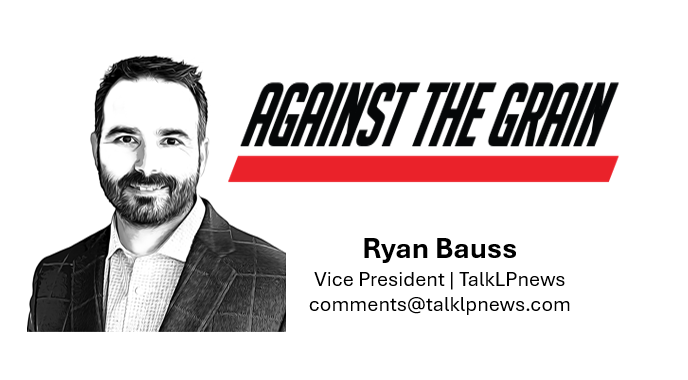A few weeks back, I ran into the store to pick up a few things and hopped in the self-checkout line behind someone who had that tired, overwhelmed expression we’ve all had at the end of a long day. Bags everywhere. Kids restless. A cart loaded with the kind of chaos you only understand if you’ve ever shopped at 6pm on a weekday. One of her items wouldn’t scan, so the employee stepped in to help. Not with attitude. Not with impatience. Just a warm, friendly voice that offered, “Let me help you with that, hun!”
The whole thing took maybe ten seconds, but you could see her relax almost immediately. She smiled. She exhaled. She went from frazzled to grounded. After the employee left, she spotted a “forgotten” can of baby formula under one of her bags. She froze for a moment, side-eyed the attendant podium, and then began a new transaction to pay for it.
I caught the whole thing. LP eyes never turn off. She had opportunity. She had a plausible rationalization. With the stress she was under, need wasn’t off the table either. But that one small, sincere interaction fractured the theft triangle in an unexpected way.
Honesty happened because someone made her feel seen, not suspected.
That moment became the spark for this follow-up to Retail’s Black Mirror. In that article, I talked about how retail has become a reflection of itself, shaped by frictionless systems and automated expectations that quietly change how we behave. If you missed it, here’s the link: Retail’s Black Mirror
This sequel takes that reflection even further. If retail wants to solve shrink in a lasting way, there needs to be a shift away from spotting dishonest behavior and toward designing environments where fewer people feel pushed, tempted, or justified to cross the line in the first place.
The One-sided Triangle
Ask any LP/AP leader about the Theft Triangle and they can draw it from memory. Three sides. Three conditions that must exist for someone to steal.
Opportunity. Rationalization. Need.
The triangle is simple and uncomfortable because it exposes how theft isn’t random. It’s engineered by circumstances. It’s shaped by environment. And it’s influenced by how people feel. Retail has spent decades attacking the Opportunity side. More cameras. More alarms. More devices. More hardening. We turned the “Opportunity” side of the triangle into the entire strategy. But, if all we do is reduce “opportunity,” we never solve the root cause. We only chase symptoms. The other two sides matter just as much. Rationalization and “justification” grow when people feel ignored, disconnected, disrespected, or beaten down by life or work. The “need” expands when someone’s life falls apart or when their stress outweighs their judgment.
An employee doesn’t walk into work as a criminal. The triangle forms around them.
Flipping the Triangle
If the triangle explains why people steal, then retail needs to start designing environments that soften or remove the conditions that complete it.
We can still protect opportunity. But we must also influence the human factors that shape rationalization and need. This isn’t soft. This is strategic.
When people feel welcomed and acknowledged, their ability to rationalize theft weakens. When employees feel supported, included, and trusted, their internal “need” shifts from survival behavior to belonging. When stores feel organized, engaged, and connected, opportunistic theft drops without a single confrontation.
Honesty becomes the default when the triangle loses its edges.
LP/AP as Behavior Architects
This is where retail needs a mindset shift. Legacy LP/AP thinking focuses on detection. Future LP/AP thinking will focus on design. Designing environments where honesty is easier than dishonesty. Designing processes that remove gray areas. Designing cultures that celebrate integrity before punishing the lack of it.
Here are some practical examples:
- Train employees to use hospitality and service as a preventive tool.
- Strengthen awareness around honest actions, not just dishonest consequences.
- Recognize integrity openly so that honesty carries weight in the culture.
- Bring LP/AP into HR, operations, and planning so the triangle can be influenced across the whole store, not just the loss prevention teams.
None of this replaces technology. It strengthens it. The goal is not better detection. The goal is fewer people feeling compelled to test the system at all.
The Black Mirror Twist
In Retail’s Black Mirror, I warned that retail’s systems now shape behavior as much as they respond to it. This follow-up exposes the next truth. If we want to reduce theft, we must stop building better mirrors and start building better people systems.
Shrink falls when the triangle fractures. Honesty rises when environments invite people to choose it. And LP/AP becomes far more powerful when it guides human behavior instead of chasing it.
The Theft Triangle is simple geometry. Three sides. Three pressures. One predictable outcome. But the beauty of geometry is that shapes aren’t destiny. Change any angle and the whole structure bends. Retail can keep reinforcing the triangle. Or we can start influencing the human angles that weaken it. When the angles change, the behavior changes. And that is how shrink finally moves in the right direction.
The triangle explains the problem. Going against the grain means rewriting the geometry so the problem can’t exist at all.


